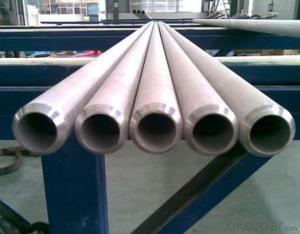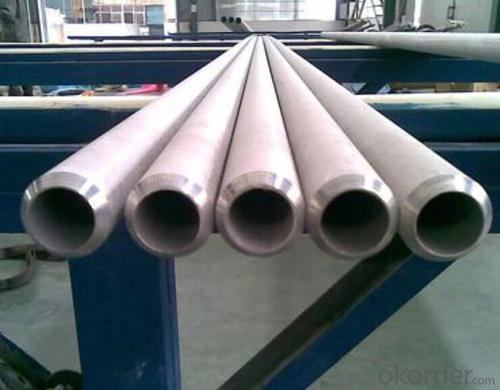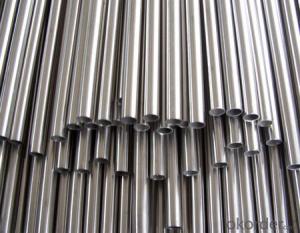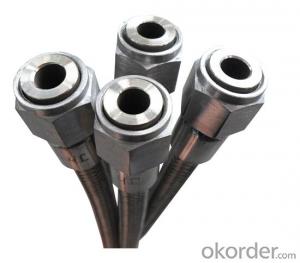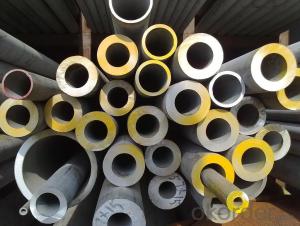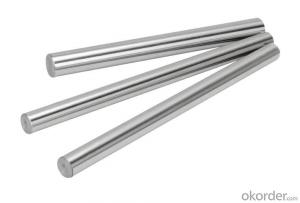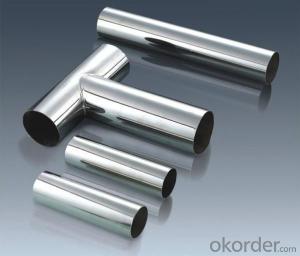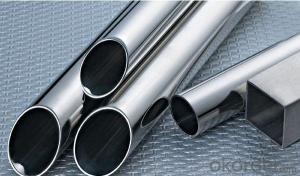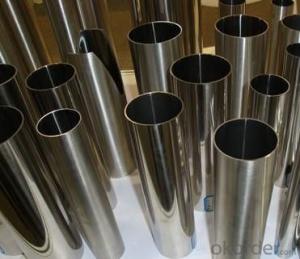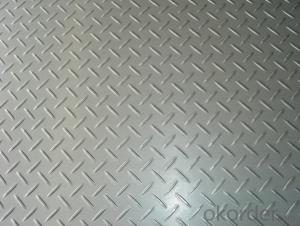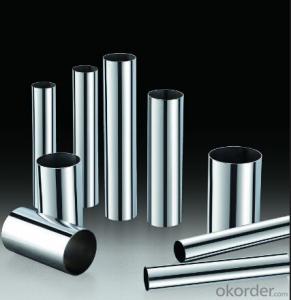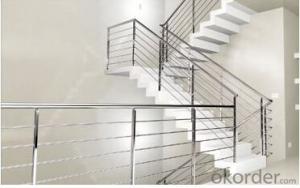Stainless Steel Pipe 304
- Loading Port:
- China Main Port
- Payment Terms:
- TT or LC
- Min Order Qty:
- 25-35 kg
- Supply Capability:
- -
OKorder Service Pledge
OKorder Financial Service
You Might Also Like
Quick Details
| Standard: | JIS,AISI,ASTM,GB,DIN,CE | Place of Origin: | Guangdong China (Mainland) | Brand Name: | QX |
| Model Number: | 201/202/304/316/316L/430 | Type: | Welded | Steel Grade: | 300 Series |
| Application: | Decoration,construction, upholstery | Certification: | ISO | Welding Line Type: | ERW |
| Thickness: | 0.3mm to 3.0mm | Outer Diameter: | 9.53mm to 159mm | Polish: | Satin,Bright or Mirror |
| Grade: | 201,202,301,304,316,316l,430 ect. | Length: | In gernal 5.8m/6m or as customer request | Process method: | Hot rolled |
| Test: | Squash test, water pressure test,extended test,crystal rot test etc. | Production Standard: | ASTM A554 | Materials: | SUS 304, 201, 316, 316L,430 ect |
| OD tolerance: | + / - 0.15mm | Thickness tolerance: | +/- 10% | Length tolerance: | +/- 10mm |
Packaging & Delivery
| Packaging Detail: | Every tube is sleeved in plastic bag individually, and then several tubes are packed by weaving bag, which is seaworthy. Or 50kg/bundle, 500kg/bundle.We can pack as clients' requirement. |
| Delivery Detail: | 25 - 35 days for a full container. |
Specifications
Stainless Steel Pipe:
1.201,202,301,304,316L,430,etc
2.OD:6mm-159mm
3.Thickness:0.25mm-3.5mm
4.Finish:Mirror,Satin,Hairline
Stainless Steel Pipe 304 Image
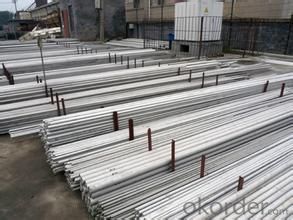
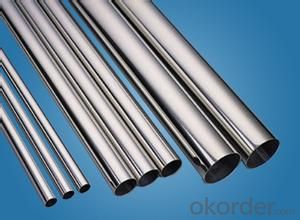
FAQ of Stainless Pipe 304
①How is the quality of your products?
Our products are manufactured strictly according to national and internaional standard, and we take a test
on every pipe before delivered out. If you want see our quality certifications and all kinds of testing report, please just ask us for it.
Guaranteed: If products’ quality don’t accord to discription as we give or the promise before you place order, we promise 100% refund.
②How about price?
Yes, we are factory and be able to give you lowest price below market one, and we have a policy that “ for saving time and absolutely honest business attitude, we quote as lowest as possible for any customer, and discount can be given according to quantity”,if you like bargain and factory price is not low enough as you think, just don’t waste your time.Please trust the quotation we would give you, it is professional one.
③Why should you chose us?
Chose happens because of quality, then price, We can give you both.Additionally, we can also offer professional products inquiry, products knowledge train(for agents), smooth goods delivery, exellent customer solution proposals.Our service formula: good quality+good price+good service=customer’s trust
SGS test is available, customer inspection before shipping is welcome, third party inspection is no problem.
Any question, pls feel free to contact us !
- Q: What is the difference between Schedule 20 and Schedule 40 stainless steel pipes?
- The wall thickness and pressure ratings distinguish Schedule 20 and Schedule 40 stainless steel pipes. Schedule 20 pipes, with their thinner walls, possess a greater internal diameter, facilitating a higher flow rate of liquids or gases. Ideal for residential plumbing or light-duty industrial applications, they suffice for lower pressure ratings. Conversely, Schedule 40 pipes boast thicker walls compared to Schedule 20 pipes. This increased thickness enhances their strength and durability, rendering them suitable for high-pressure applications in industries like oil and gas, chemical processing, or heavy-duty industrial processes. Regarding pressure ratings, Schedule 20 stainless steel pipes typically possess lower ratings than Schedule 40 pipes. This discrepancy arises from the thinner walls of Schedule 20 pipes, unable to withstand the same high pressure as their Schedule 40 counterparts. It is worth noting that both Schedule 20 and Schedule 40 stainless steel pipes share the same material, stainless steel. Their divergence lies solely in the wall thickness and consequent pressure ratings, enabling their suitability for distinct applications based on the required pressure and flow rate.
- Q: Can stainless steel pipes be used for desalination systems?
- Indeed, desalination systems can utilize stainless steel pipes. This material, known for its resistance against corrosion, can withstand the demanding conditions present in desalination processes, wherein salt and other impurities are extracted from seawater. The exceptional corrosion resistance of stainless steel renders it a prime selection for conveying the treated water, as it aids in preserving the water's purity and preventing any contamination. Furthermore, stainless steel pipes possess commendable mechanical attributes, such as strength and durability, which are indispensable for the effective operation of desalination systems.
- Q: How do stainless steel pipes compare to titanium pipes?
- Stainless steel pipes and titanium pipes exhibit distinct characteristics, catering to diverse applications based on specific needs. In terms of strength, titanium pipes generally outperform stainless steel pipes. Titanium possesses an impressive strength-to-weight ratio, making it an ideal choice for lightweight yet strong materials. Conversely, stainless steel is renowned for its excellent tensile strength and durability, albeit being relatively heavier than titanium. Regarding corrosion resistance, both stainless steel and titanium pipes demonstrate high resistance to corrosion. Nevertheless, titanium pipes offer superior corrosion resistance, particularly in aggressive environments like seawater or chemical processing applications. Stainless steel pipes also possess good corrosion resistance but might require additional coatings or treatments to enhance their resistance in certain conditions. Temperature resistance is another crucial aspect to consider. Titanium pipes can endure high temperatures without compromising their strength or structural integrity, making them suitable for high-temperature applications in industries such as aerospace or power generation. Stainless steel pipes also exhibit decent heat resistance, but their performance may vary depending on the specific grade of stainless steel and the temperature range involved. Cost is an essential factor as well. Generally, stainless steel pipes are more cost-effective compared to titanium pipes. Titanium, due to its scarcity, intricate fabrication process, and higher production costs, is a pricier material. Hence, if cost is a significant consideration, stainless steel pipes emerge as a more viable option. In conclusion, stainless steel pipes and titanium pipes possess their own merits and aptitude for distinct applications. Titanium pipes excel in terms of strength, corrosion resistance, and heat resistance but come at a higher cost. Stainless steel pipes offer satisfactory strength, corrosion resistance, and cost-effectiveness. Ultimately, the selection between the two relies on the specific requirements, budget, and intended application of the pipes.
- Q: Can stainless steel pipes be bent?
- Indeed, it is possible to bend stainless steel pipes. Stainless steel, being an incredibly versatile material, possesses remarkable strength and ductility, enabling it to undergo bending without any risk of breakage or cracking. To achieve the desired outcome, the bending process employs a variety of techniques, including cold bending, induction bending, or hot bending, depending on the pipe's thickness and the desired outcome. With the ability to be bent to different angles and shapes, stainless steel pipes find themselves well-suited for a broad range of applications in construction, plumbing, and the automotive industry. Nonetheless, it is vital to emphasize that professionals or specialized equipment must be employed to carry out the bending process, ensuring the stainless steel pipes' structural integrity and overall quality.
- Q: Can stainless steel pipes be used for construction?
- Certainly, construction can utilize stainless steel pipes. Stainless steel, being an incredibly durable and corrosion-resistant material, is well-suited for a wide range of construction applications. It is frequently employed in plumbing systems, water supply lines, and underground piping where the ability to resist corrosion is of utmost importance. Moreover, stainless steel pipes are utilized in the construction of bridges, buildings, and infrastructure projects due to their robustness and capacity to withstand harsh weather conditions. Furthermore, the aesthetic appeal and minimal upkeep requirements of stainless steel make it a preferred choice for architectural designs. In conclusion, stainless steel pipes are a dependable and enduring option for construction purposes.
- Q: Can stainless steel pipes be used for chemical drainage?
- Yes, stainless steel pipes can be used for chemical drainage. Stainless steel is highly resistant to corrosion and can withstand exposure to a wide range of chemicals, making it a suitable choice for chemical drainage systems.
- Q: What is the difference between 17-4PH and 15-5PH stainless steel pipes?
- The main difference between 17-4PH and 15-5PH stainless steel pipes lies in their chemical composition and mechanical properties. 17-4PH stainless steel is a precipitation-hardening grade that contains 17% chromium, 4% nickel, 4% copper, and a small amount of molybdenum. It is known for its excellent combination of high strength and corrosion resistance. This grade can be heat treated to achieve different levels of hardness, making it suitable for various applications that require both strength and corrosion resistance. On the other hand, 15-5PH stainless steel is also a precipitation-hardening grade but with a slightly different composition. It consists of 15% chromium, 5% nickel, and 3-5% copper. This grade offers good strength, toughness, and corrosion resistance, comparable to 17-4PH stainless steel. However, it has a higher level of toughness and better resistance to stress corrosion cracking. In terms of mechanical properties, 17-4PH stainless steel generally has higher strength and hardness compared to 15-5PH stainless steel. It can be heat treated to achieve a wide range of hardness levels, including high strength and hardness suitable for demanding applications. 15-5PH stainless steel, although still possessing good strength, is typically not heat treated to the same extent as 17-4PH. Both 17-4PH and 15-5PH stainless steel pipes are commonly used in industries such as aerospace, oil and gas, and chemical processing, where their combination of strength and corrosion resistance is highly beneficial. The choice between the two grades depends on specific application requirements, with 17-4PH offering higher strength and hardness versatility, while 15-5PH providing better resistance to stress corrosion cracking and improved toughness.
- Q: What are the common applications for stainless steel pipes?
- The unique properties and versatility of stainless steel pipes make them suitable for a wide range of applications. Some common uses include: 1. Plumbing and water supply systems: Stainless steel pipes are commonly employed in plumbing and water supply systems because of their resistance to corrosion and ability to withstand high pressure. They provide a reliable and long-lasting solution for transporting water and other fluids. 2. Oil and gas industry: Stainless steel pipes are extensively utilized in the oil and gas industry for the transportation of oil, gas, and other hydrocarbons. Their ability to withstand high temperatures and pressures makes them suitable for exploration, production, and transportation of these resources. 3. Food and beverage industry: The hygienic properties and corrosion resistance of stainless steel pipes make them widely used in the food and beverage industry. They are commonly employed for transporting liquids, such as milk, juices, and processed foods, ensuring the safety and quality of the products. 4. Chemical and pharmaceutical industry: Stainless steel pipes, being highly resistant to corrosion, are ideal for the chemical and pharmaceutical industry. They are used for transporting various chemicals, acids, and solvents, ensuring the integrity of the substances being transported. 5. Construction and architecture: Stainless steel pipes are utilized in construction and architectural applications due to their aesthetic appeal and structural strength. They are often used for handrails, balustrades, structural columns, and decorative purposes, adding a modern and sleek look to buildings. 6. Automotive industry: Stainless steel pipes are used in the automotive industry for exhaust systems because of their heat resistance and durability. They can withstand high temperatures and corrosive gases, ensuring the efficient operation of the exhaust system. 7. Power generation: Stainless steel pipes find application in power plants for the transportation of steam, water, and other fluids. They are resistant to high temperatures and pressures, making them suitable for power generation purposes. 8. Aerospace industry: Stainless steel pipes are employed in the aerospace industry for various applications, including aircraft exhaust systems, hydraulic systems, and fuel lines. They offer a high strength-to-weight ratio, corrosion resistance, and reliability, meeting the stringent requirements of the aerospace industry. In conclusion, stainless steel pipes are utilized in various industries due to their corrosion resistance, durability, and versatility. They find applications in plumbing, oil and gas, food and beverage, chemical and pharmaceutical, construction, automotive, power generation, and aerospace industries, among others.
- Q: Can stainless steel pipes be used for underground gas lines?
- Indeed, underground gas lines can utilize stainless steel pipes. Renowned for their impressive resistance to corrosion, stainless steel pipes prove to be an apt selection for underground scenarios wherein moisture and diverse chemicals prevalent in the soil pose a threat. Moreover, these pipes exhibit a remarkable strength-to-weight ratio, rendering them sturdy enough to endure the pressure and environmental circumstances linked to underground gas lines. Furthermore, stainless steel pipes boast an extended lifespan and necessitate minimal upkeep, thus emerging as an economical and dependable choice for subterranean gas distribution systems.
- Q: How can galvanized steel pipe be connected with stainless steel pipe?
- The method of non direct fusion is adopted, such as blue, silk head and movable joint.
Send your message to us
Stainless Steel Pipe 304
- Loading Port:
- China Main Port
- Payment Terms:
- TT or LC
- Min Order Qty:
- 25-35 kg
- Supply Capability:
- -
OKorder Service Pledge
OKorder Financial Service
Similar products
Hot products
Hot Searches
Related keywords
